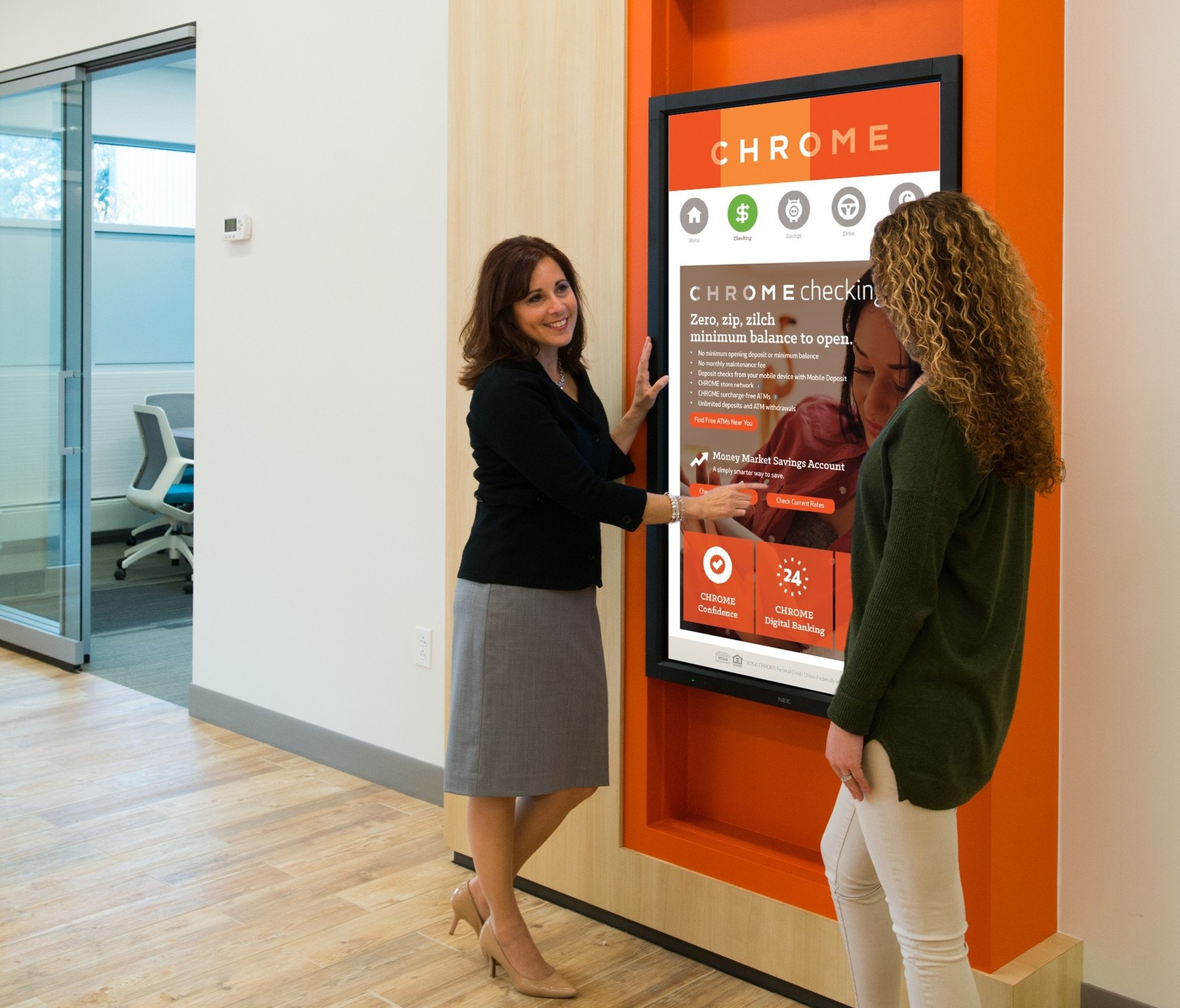According to the Credit Union think-tank Filene, mobile engaged consumers use an average of 20% more products and can be sold to and served at a fraction of the cost of the typical credit union member. This is true even though these members are still coming into the branch for their most complex needs.
New branch technology, such as smart ATMs and self-service tools such tablets, require operational shifts and member education. But when paired with a strategy to deepen member engagement or improve efficiency, these tools frequently deliver a better member experience. Customers overwhelmingly prefer digital channels for day-to-day banking needs, but when their needs bring them in to a branch it is an opportunity for financial institutions to deepen their customer relationship through excellent advice and access to the right products. A good technology strategy can enhance this experience.
Boost Branch Efficiency
The seamless integration of technology into the branch not only introduces customers to your digital presence, it also makes your branch more efficient and waiting times less significant. iPad check-in stations at Singapore’s DBS Bank facilitate queuing. By having basic information and forms pre-filled during the check in, their average teller transaction time is cut in half from five minutes to two and a half.
This “active waiting” impacts both the teller’s efficiency and customer’s wait time, and as an added bonus, customers becomes familiarized with the bank’s mobile environment while having something to do while they wait.
Turn Customers into Users
Once digitally engaged, customers are easier to reach out to and much easier to serve. This transition to digital frees up branch resources for more valuable consultative services.
An important focus today is on educating customers to use the devices they already have. Smartphone ownership has more than doubled in the past five years, surpassing computer ownership. Through one-on-one interaction branch staff can familiarize customers with the mobile banking app and show them the benefits of using this technology for their day-to-day needs. If the staff can convert those customers into mobile users, they inevitably become more likely to deepen their overall banking relationship.
Find the Intersection between Digital and Physical Delivery Channels
Take a moment to browse several different credit union and community banks websites. You’ll notice they fall generally into two categories, static and dynamic. A static website is a repository of information that doesn’t change and merely acts as a façade to the online banking portal. This type of website begins to wilt the day it’s released because the customer has no reason to ever return for something new.
A dynamic website, however, is a powerful tool that boosts user engagement by providing relevant, valuable, and up to date information. One such website belongs to NIH Federal Credit Union, where it is a great resource for current loan rates and educational information that’s curated to health care industry workers. One feature, public reviews of services, prompts members to give feedback and adds a level of transparency that builds trust among existing and potential members.
To further blur the line between digital and physical experiences, some financial institutions, such as CHROME FCU, are investing in excellent digital banking platforms and modeling their branch environments to mirror these user friendly environments. At CHROME, “Banking made simple” is woven throughout their digital and physical platforms. And pushing this strategy even further, some banks and credit unions are using the geo-location feature in their mobile apps to deliver location specific promotions in branches or at partner locations.
Put Strategy before Technology
These examples are successful because they were born of a well-defined strategy, and technology solutions were selected as the best facilitator for these strategies. Putting strategy before technology is critical to creating a plan that boosts efficiency and customer engagement instead of just boosting expenses.
Technology that doesn’t serve a strategic objective is doomed to obsolescence the moment it is implemented. No financial institution is investing in iPad stations just for the sake of having iPads. If tactics such as the need for self-check-in, or the ability to self-start loan applications aren’t driving the investment, then the iPads have become a novelty.
It’s when the technology solution adds customer value, by facilitating access to the right products and freeing up employees to deliver the most relevant advice, that a solid branch plan centered on technology becomes truly effective. It’s why we shift the question from “what does the branch of the future look like?” to “how can our branch of the future serve our members and customers in the most relevant, impactful, and delightful way?”

